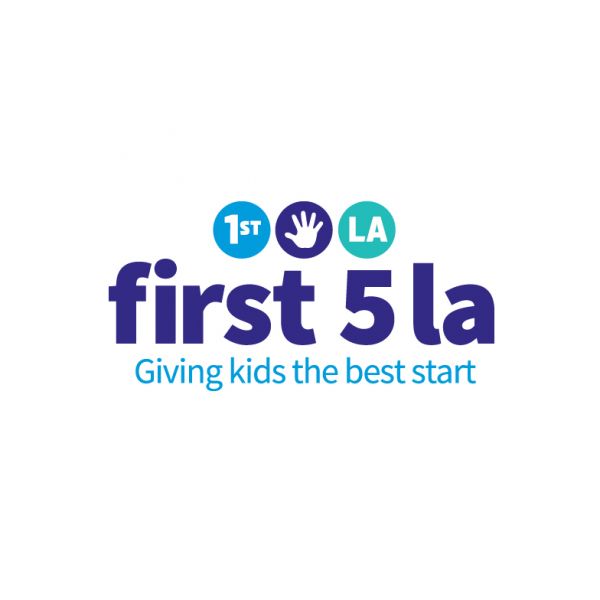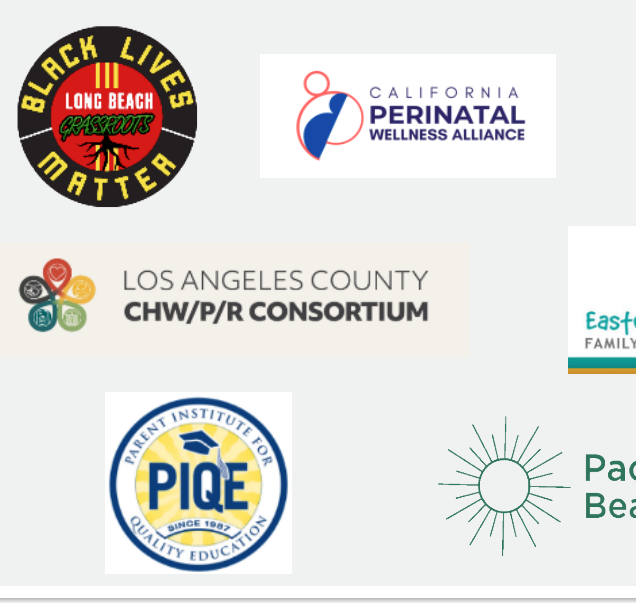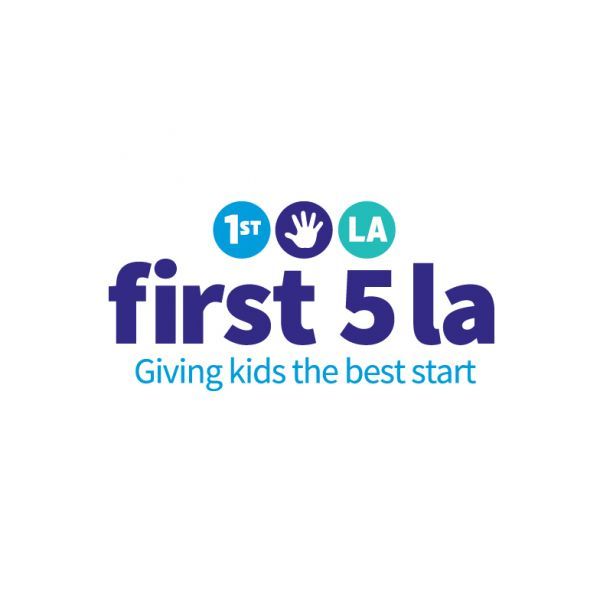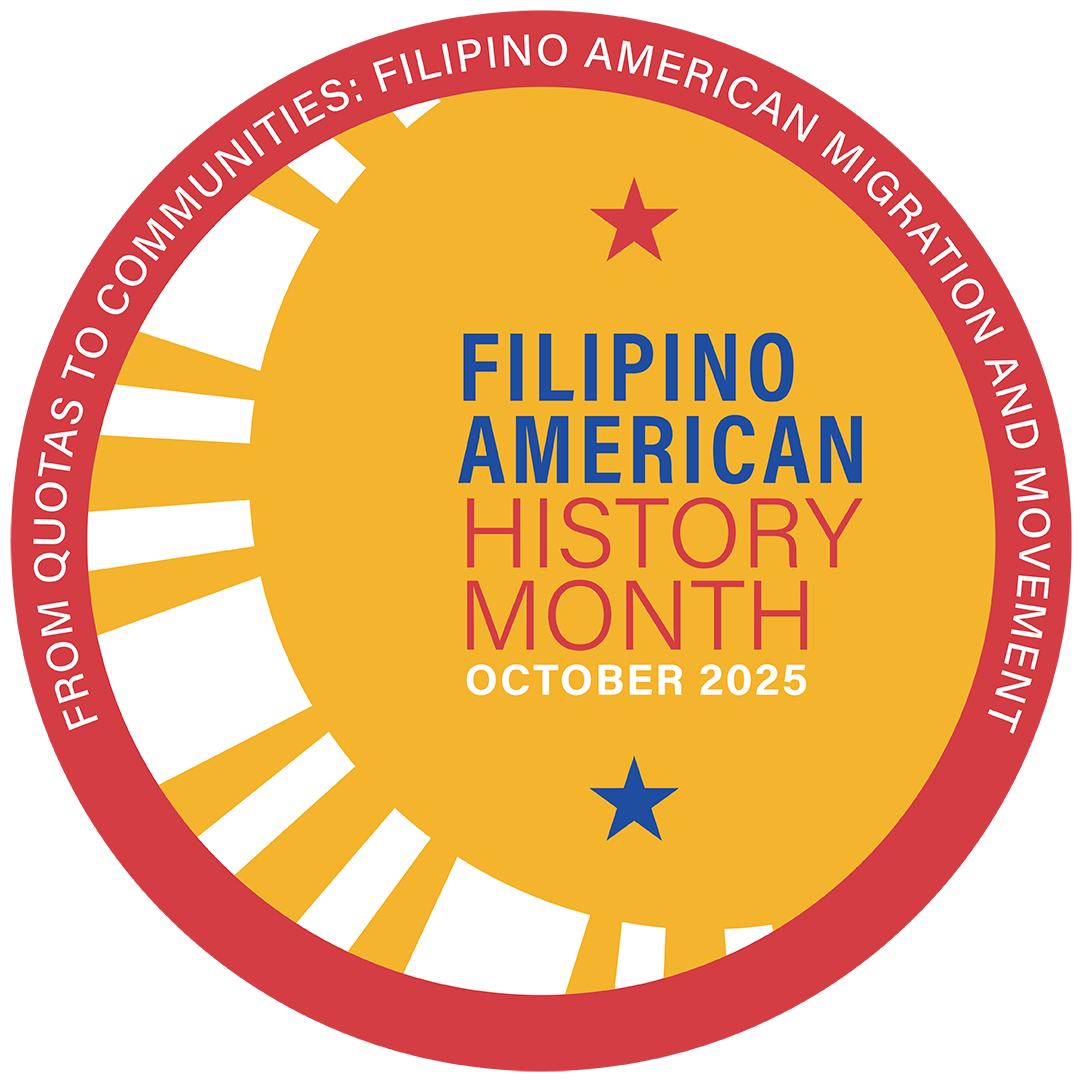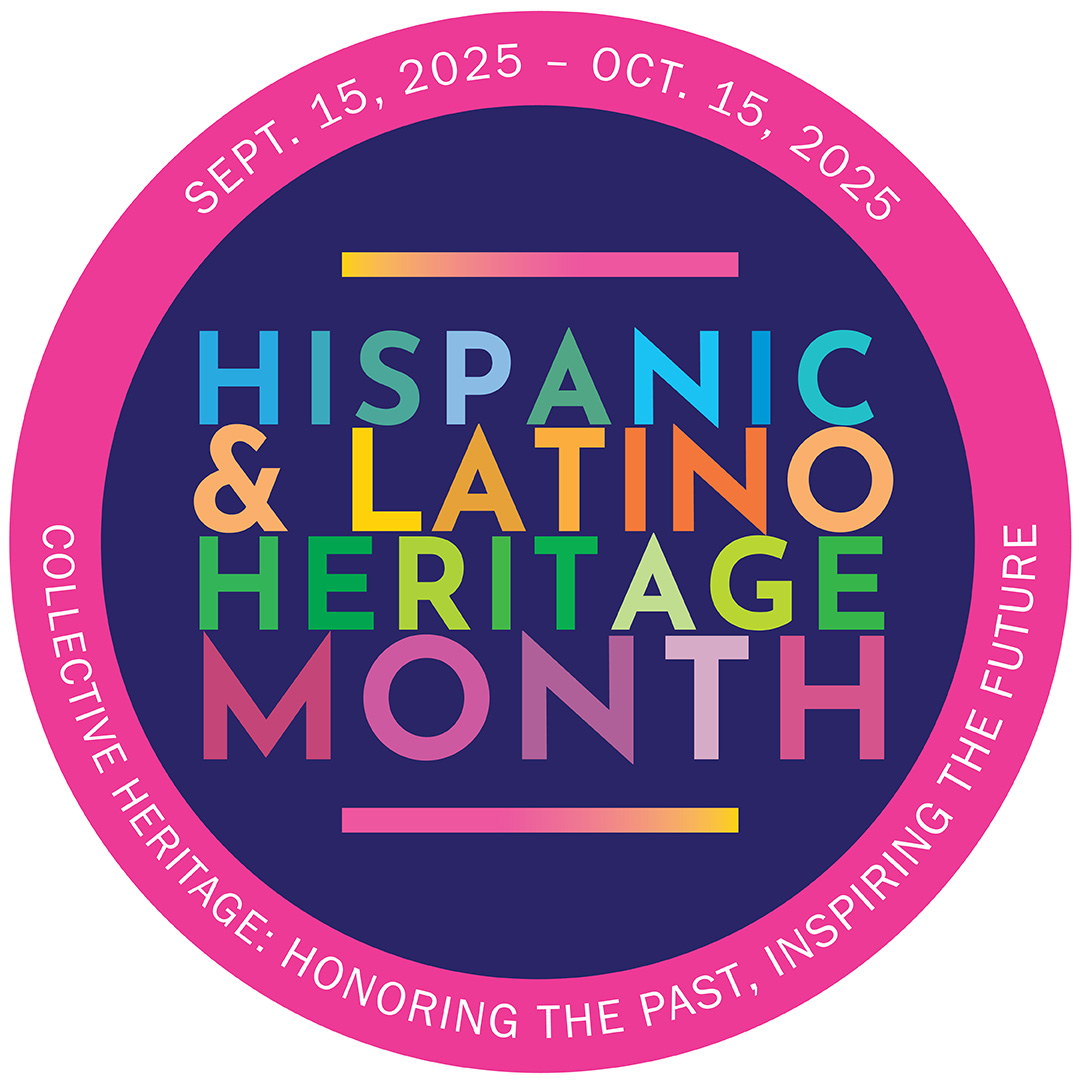By, Ruel Nolledo | Freelance Writer
May 22, 2025
Opening your home to a stranger can be scary. Especially if you’re a new mom.
Just ask Dani. After the birth of her son, she got a call from a parent educator asking if she’d like to participate in a home visiting program. The invitation left her baffled and a little anxious.
“I was like, ‘You guys want to come into my house and do what?'” she candidly admitted to the packed conference room at the California Endowment. “I’d been upstairs with my child most of the time, I didn’t know what the house looked like, and I was up to here with bottles.”
It was only after a conversation via Zoom, when Dani’s son became smitten with the parent educator, that Dani decided to give home visiting a try.
“I told myself: Okay, I’m going to go ahead and allow you into my home,” she recalled. “I’m going to trust that these people and this program are here for the right reasons.”
It turned out well, she adds. With the support of Catherine, her parent educator, everything changed. Dani was able to connect to a local regional center and get the resources she needed for her son. And in the process, she gained a new friend and confidant.
“We were just surviving before,” she says. “And now, I am thriving in life. My son is thriving.”
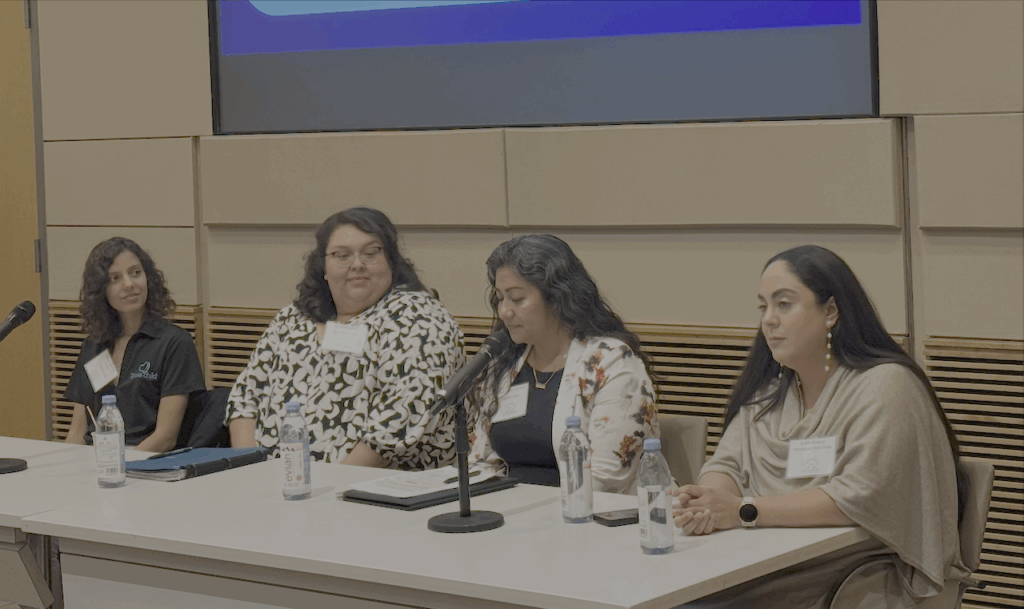
L-R: Catherine Chavez and Dani Lopez of The Whole Child; Leticia Sanchez of Children Now; and Edit Avalos of Providence Holy Cross Medical Center, speaking on the Home Visiting Day panel.
Dani was among the panelists featured during the recent Home Visiting Day event at the California Endowment. Hosted by LA Best Babies Network (LABBN) and the L.A. County Perinatal and Early Childhood Home Visitation Consortium, the event drew nearly 100 attendees who were excited to celebrate the power of home visiting services across Los Angeles County. It also marked the first time the annual gathering took place in person after years of being a virtual event.
“It was time to come together in person,” observed Anna Ghukasyan, a senior policy research associate at LABBN. “We wanted to shine a brighter light on the importance of home visiting and the life-changing impact it has on families.”
And, as Dani’s testament shows, home visiting does change lives. That’s due in part to a unique two-generational approach that incorporates a range of elements, including the optimal development of children, healthy family relationships, the confidence and competence of parents, family economic self-sufficiency, and more.
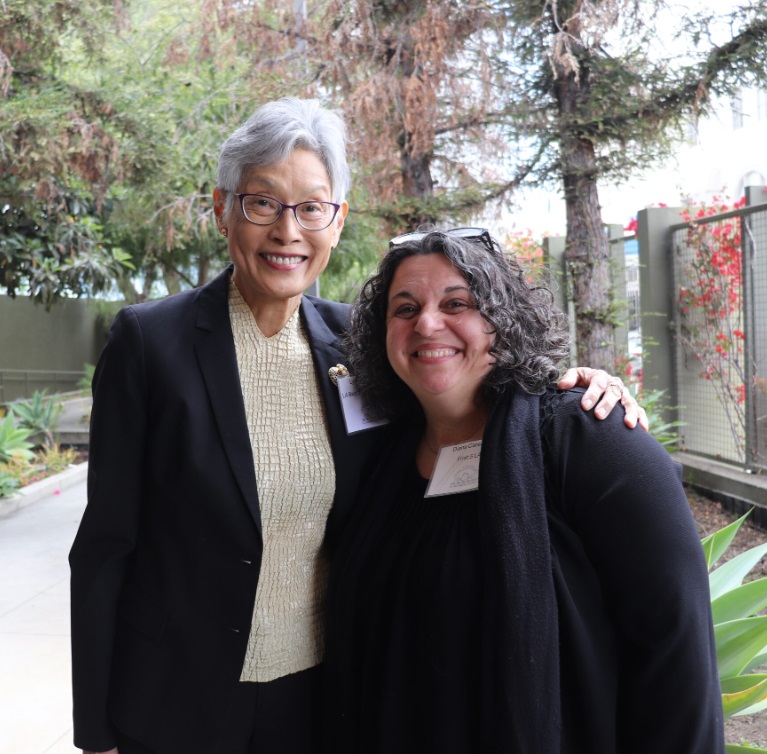
First 5 LA Director of Family Supports, Diana Careaga stands with LA Best Babies Network’s former Executive Director Dr. Margaret Lynn Yonekura
“Home visiting is different from other supports,” observes First 5 LA Family Supports Director Diana Careaga. “Families are able to work with their home visitor over a longer period of time, getting to know one another and building trust.”
The idea is simple: new and expecting parents are matched with trained professionals who serve as their resource guides, parenting coaches and one-person cheer team, all rolled into one. Depending on the model, these professionals offer different types of support, ranging from prenatal care, childbirth preparation and breastfeeding support to child development education and home safety; they can also connect families to community resources like health care, food assistance, and early intervention services. At the same time, home visiting strengthens families and builds resilience by providing resources, guidance, and encouragement. It can help families navigate challenges, strengthen parent-child relationships, and ultimately enhance their overall resilience.
Since the first Home Visiting Day celebration took place in 2022, there’s been a tremendous outpouring of support for home visiting from partner organizations, advocates and locally elected officials. Last year alone, several cities — including Palmdale, Long Beach and Los Angeles — issued proclamations commemorating Home Visiting Day. The growing recognition of home visiting and its benefits is long overdue. Home visiting has been around for a long time — well over 100 years, in fact. Here in Los Angeles County, home visiting began in earnest with the Department of Public Health’s Nurse-Family Partnership (NFP) program, which began with a pilot in 1997 and later expanded countywide thanks to Department of Public Social Services (DPSS) funding.
L.A. County’s home visiting programs further expanded in 2009 when Fist 5 LA launched Welcome Baby, a free, voluntary home visiting program designed for families giving birth at participating hospitals. Delivered in partnership with LA Best Babies Network and several community partners, Welcome Baby was later expanded to 13 L.A. County hospitals. In recognition that some families benefit from more focused support, First 5 LA also began funding two evidence-based home visiting models — Healthy Families America (HFA) and Parents as Teachers (PAT) — in 2014.
Today, Los Angeles County boasts over seven home visiting models — including NFP, HFA, PAT, Welcome Baby, Partnership for Families and Early Head Start — that reach over 30,000 families each year. Participation in these programs is voluntary and at no cost to the family.
Earlier this year, home visiting received some additional attention with the release of a new study on the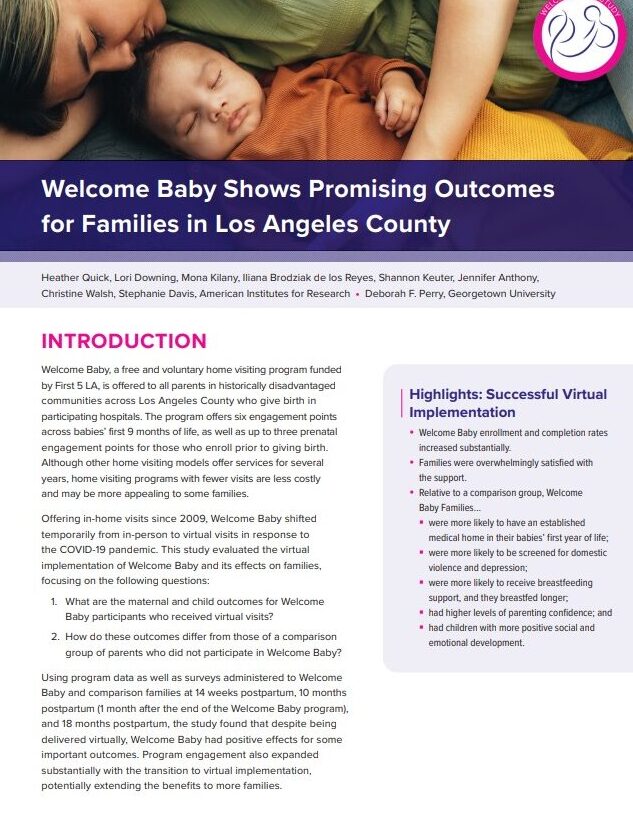 Welcome Baby program. Conducted by the American Institutes for Research (AIR), the study examined the implementation of virtual visits in response to the COVID-19 pandemic, with a focus on the maternal and child outcomes, including comparison to a group that did not receive Welcome Baby. The findings were striking: Welcome Baby parents reported greater confidence in caring for and advocating for their children, their babies scored higher on measures of social and emotional development, and participants were more likely to have an established medical home early in their child’s life. The shift to virtual visits also expanded the program’s reach, particularly among Black families, and was preferred by more than half of the participants. While some effects tapered off after the program ended, the study underscores how timely, tailored support during the first year can make a real difference.
Welcome Baby program. Conducted by the American Institutes for Research (AIR), the study examined the implementation of virtual visits in response to the COVID-19 pandemic, with a focus on the maternal and child outcomes, including comparison to a group that did not receive Welcome Baby. The findings were striking: Welcome Baby parents reported greater confidence in caring for and advocating for their children, their babies scored higher on measures of social and emotional development, and participants were more likely to have an established medical home early in their child’s life. The shift to virtual visits also expanded the program’s reach, particularly among Black families, and was preferred by more than half of the participants. While some effects tapered off after the program ended, the study underscores how timely, tailored support during the first year can make a real difference.
“It really does play a unique role in LA’s early childhood system,” said Careaga. “The AIR study confirms that programs like Welcome Baby have the potential to increase access to services and provide significant benefits, particularly in the critical first year of life.”
That distinction might prove relevant, given the sobering news on the funding front. At the federal level, the Administration’s proposed budget for fiscal year 2026 includes a 23% cut to non-defense discretionary spending, which encompasses programs like the Maternal, Infant, and Early Childhood Home Visiting (MIECHV) program. In California, the CalWORKs Home Visiting Program, which provides critical support to pregnant and parenting people receiving public assistance, was hit by a $30 million funding reduction in FY 2023–24 and will see continued cuts of $25 million in both FY 2024–25 and FY 2025–26. These reductions bring the program’s budget down to $74.3 million. California Department of Social Services noted recently that, as a result of this reduction, counties have reported staff reductions, increased waitlists in at least two counties, reduced number of families served, decreased referrals and outreach activities, and a decrease in health and safety materials. In light of potential cuts, shorter and less intensive home visiting approaches like Welcome Baby might play a crucial role in helping families.
First 5 LA remains committed to this work. The agency’s 2024–2029 Strategic Plan explicitly includes home visiting under its Maternal and Child Well-Being initiative as a core strategy for promoting equity, supporting maternal mental health, and closing gaps in access to early childhood.
In the end, it’s all about being there for the families, says Ghukasyan.
“The home visiting community in LA is vast and diverse,” she observes. “But what unites everyone is a commitment to supporting parents and nurturing strong family bonds… We’re part of a larger community.”
And for those parents who are hesitant to let a home visiting professional into their home, Dani offers some advice.
“If you want opportunities, take their hand,” she says. “Take the home visiting program, and let it work for you.”
